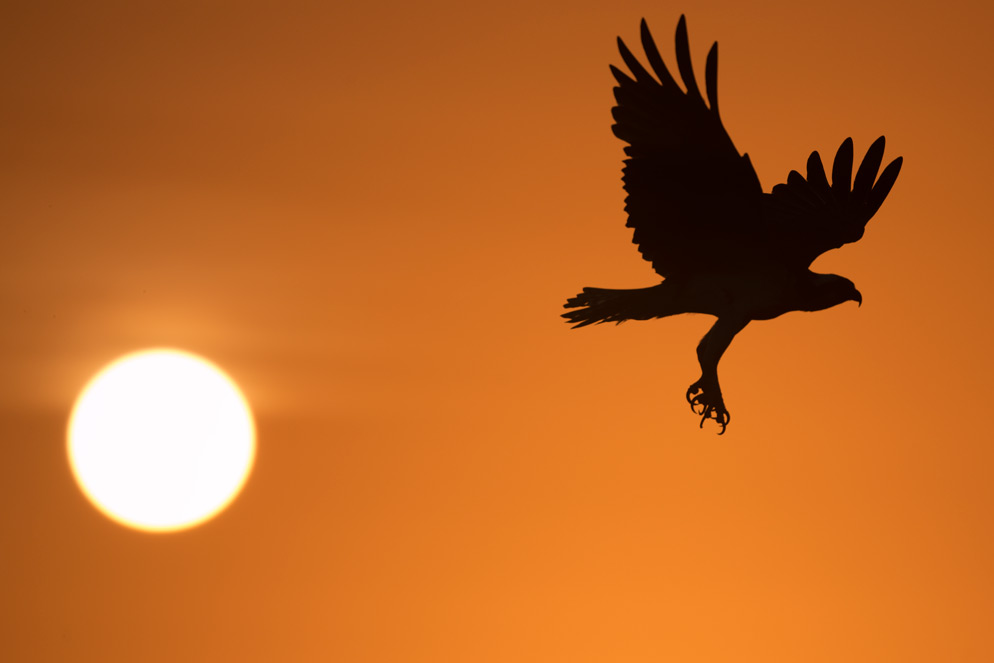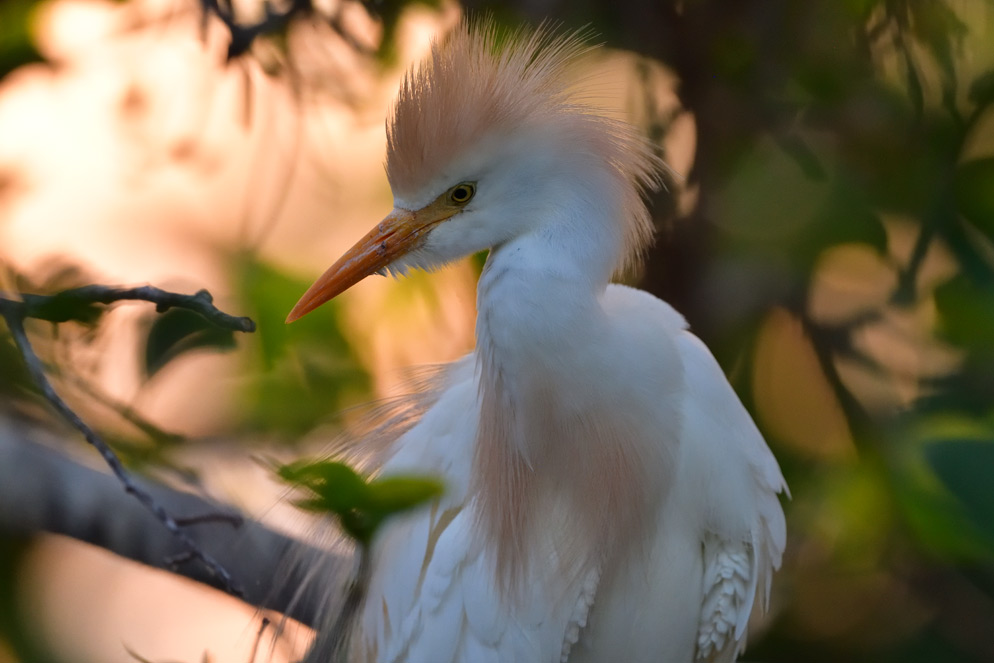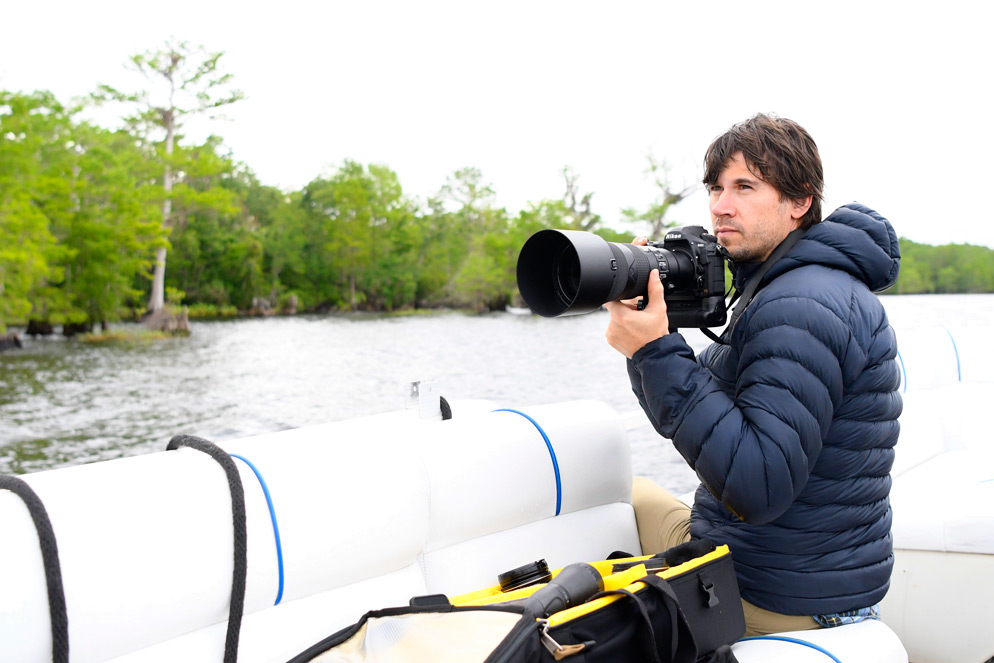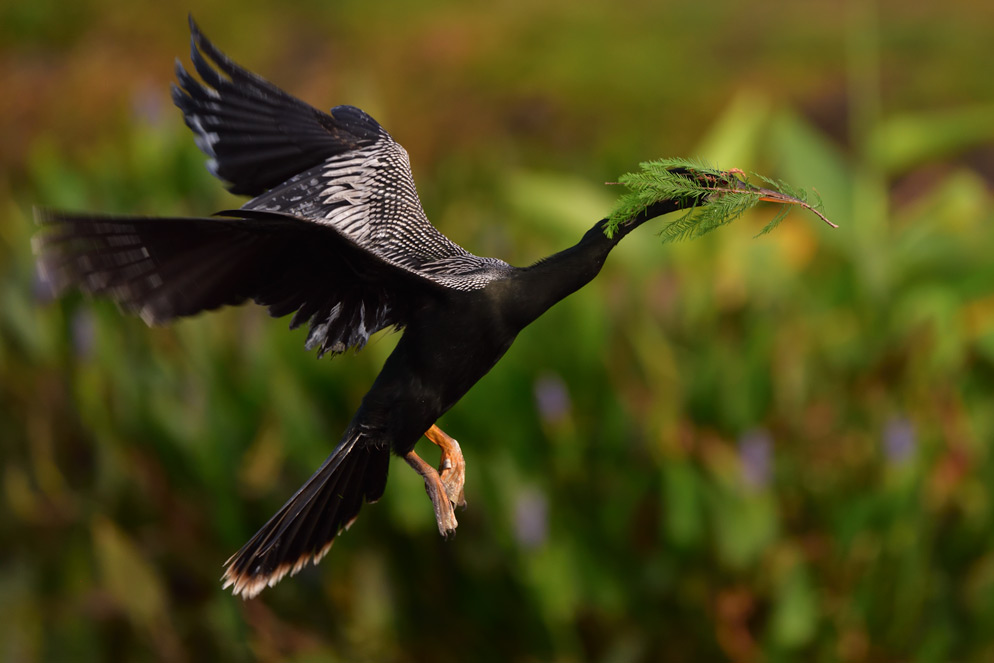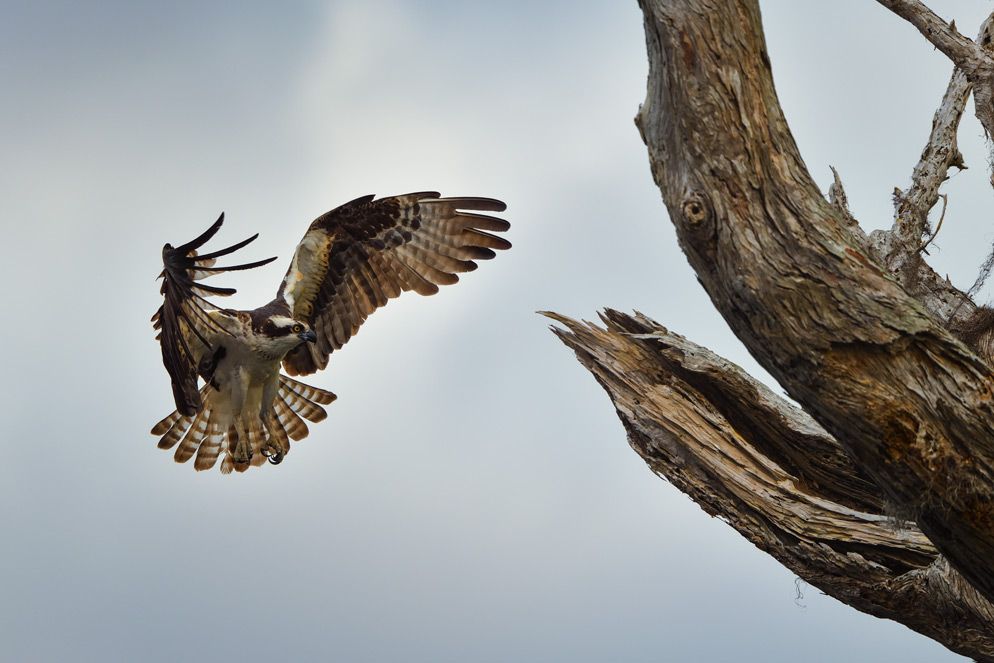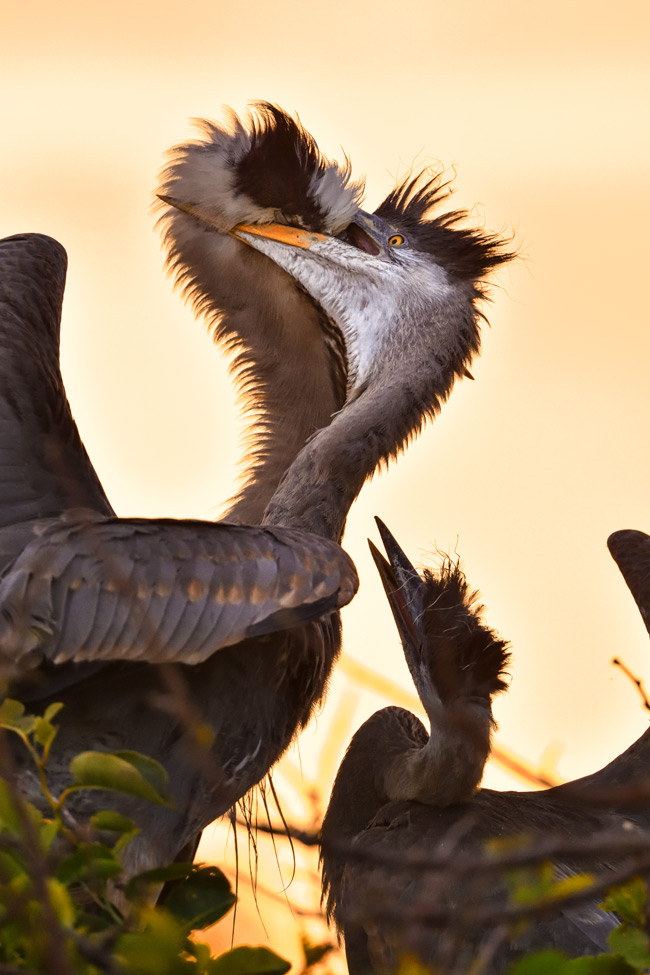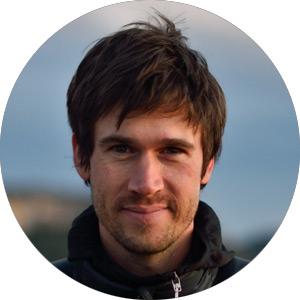Reach for the Sky: A Breakthrough Telephoto is a Perfect Fit for the Fast Action of Bird Photography
On one level, the photos you see here aren't difficult to take: in the right place, at the right time, the birds will come to you.
Wildlife and extreme sports photographer Keith Ladzinski took these images at the Wakodahatchee Wetlands in Delray Beach, Florida, a location he describes as "a fantastic place, with lots of opportunities to photograph birds in their natural habitats."
Keith, a Nikon Ambassador, was at Wakodahatchee at the time most of the birds were nesting. "So it's not like you get one shot and then sit in a blind all day," he says. Find a rookery or a local nesting spot and you'll have plenty of opportunities as nesting birds feed and care for their young. The thing is, turning the right place, right time advantage into the kind of images Keith captures...well, that's easier said than done.
But Keith has some suggestions about that, too.
"An anhinga bringing back nesting material. Good separation once again—it's a key to making a picture of a bird in its habitat. He was coming quickly and I just hit the shutter button. It's like he's flying blind." D850, AF-S NIKKOR 500mm f/5.6E PF ED VR, 1/1000 second, f/5.6, ISO 400, manual exposure, Matrix metering.
Big Difference
"When you're photographing wildlife, there are two types of photographs you can take," he says. "There's the ID shot—'Look, there's the bear, or the bird'—and there's the behavioral shot—'There's the bear, or the bird, hunting fish.' "
The better shots will always have the subjects doing something, and those pictures will be more interesting because they have gesture—an element that brings energy and activity to the image. "Even in a portrait, there's gesture," Keith says. "There's energy in the pose, attitude in the expression—and in wildlife photography it's the same principle. Gesture is the difference between the ID shot and the behavioral shot."
In a wildlife photo, gesture provides interest and information; it's anything that reveals elements of the animal's behavior or habits.
In addition to gesture, what's immediately notable about Keith's photographs is what you might call the shape of the composition and the shape in the composition. In his images the subject becomes a graphic element. The birds are reaching, turning, extending; they're forming dynamic shapes.
To capture moments when that's happening takes practice, patience, skill...and the right gear.
An osprey coming in for a landing at a nest in a cypress tree. "Lots of gesture here in the talons and the spread of the feathers," Keith says. The photo is also a good example of Keith's skill at creating the shape of the composition and the shape in the composition. "The tip of his wing is at the corner of the frame—that's very much conscious," Keith says. "You don't want to shoot too loose if you want to feel the intimacy of the animal." D850, AF-S NIKKOR 500mm f/5.6E PF ED VR, 1/2500 second, f/5.6, ISO 640, manual exposure, Matrix metering.
Prime Ingredient
It's obvious: when it comes to photographing birds, you need a telephoto lens. Keith has several that he relies on for his wildlife work, but the photos here were taken with only one: Nikon's newest tele, the AF-S NIKKOR 500mm f/5.6E PF ED VR, a lighter, smaller 500mm than previously available. At 9.3 inches and 3.2 pounds, it is Nikon’s smallest and lightest full-frame 500mm prime lens ever. And it's a lens that delivers incredibly fast autofocus and brilliant image quality.
Talking with Keith about these photos and that lens, we were tempted to nickname it "the location lens" for its all-around easy handling. "It was so incredibly easy to work with," he says, and that's no small factor in Keith's still and video imaging. "For my extreme sports and wildlife work I often have to backpack in to a remote location, so less weight and small size is clearly an advantage, especially when you know you're not sacrificing quality."
Keith's skill in capturing the kind of images he's known for starts with the understanding that a telephoto lens does more than just get him close to the subject. "When you're working with wildlife or sports subjects, you really want to separate the action from the often-chaotic background," he says. "Your eye can't be distracted, and when you're shooting with a 500mm lens you get a beautiful peel off in the image where it goes gradually from the razor sharpness of the subject to the softer background that places prominence on the subject."
The new 500mm NIKKOR lens was particularly effective for his hand-held bird photography at the Wakodahatchee Wetlands.
"When you're photographing birds, there are two ways to miss the moment: you couldn't find them fast enough inside your frame, or you missed the focus. So you want to establish them quickly and have a fast AF. The new 500mm proved itself in both of those instances. This is a slimmed down telephoto for fast action and quick response."
Human Factors
Beyond the right place, the right time and the right gear there's the skill to put all the elements together to capture the fleeting moments that birds offer. You need the ability to anticipate, recognize and capture those moments, and that skill comes from practice and experience. "The more you shoot, the more [those skills] become mechanical," Keith says. "When I'm composing, I'm subconsciously looking at my edges, thinking of the center of the frame, thinking of the graphics I want to create."
But the truth is you can't direct wildlife. "The animals do what they want to do, and sometimes you'll miss it if you're just looking in the lens. You have to be looking in and around the lens to see what the lens sees and what you can see around the lens. This is especially true with birds—you have to spot them, watch them and then establish them in sight of the camera."
There are features of the new 500mm that will make that easier. One is VR (Vibration Reduction), either in normal or active mode—the former for most hand-held situations, the latter when shooting from a tripod, a monopod or a moving vehicle. The new 500mm NIKKOR also offers a sports mode VR setting that produces a more stable viewfinder image for high-speed continuous shooting and panning. Keith chose it for his bird photography as it aided his pickup of subjects in the viewfinder.
So, the right gear and the skill to use it to its best advantage. Like all things worthy of achieving, that's easier said than done, but with patience, practice, the right place and time and the extraordinary capabilities of a new easy-handling, tack sharp, fast focusing NIKKOR lens, maybe it's become a bit easier done.
"These are great blue herons—two juveniles, though quite big at this point, and one parent doing the feeding. The parents come in with food and the juveniles antagonize them until they deliver it; kind of like teenagers. A nice backlight-sidelight situation, exposed for the centers of the plumage of the birds. The lens handled this type of light very well—wide open at f/5.6, which is kind of ideal for birds. You always go for focus on the eye." D850, AF-S NIKKOR 500mm f/5.6E PF ED VR, 1/1600 second, f/5.6, ISO 1250, manual exposure, Matrix metering.

